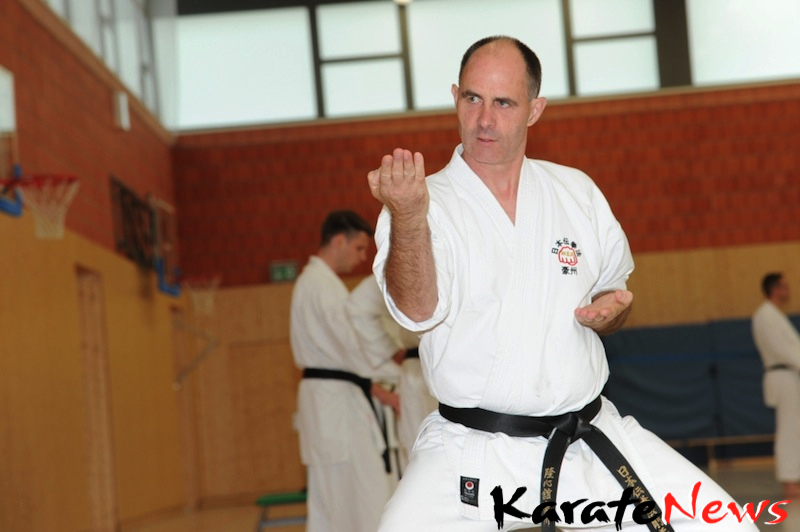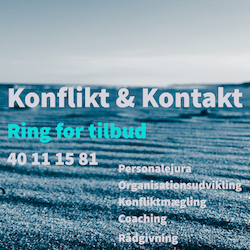(John Ingham: International Chief Instructor, Nippon-Den Kempo Goju-Ryu International)
In May, 2012, I had the privilege of travelling to Germany to train and share knowledge of Goju Ryu karate, not only with very good friends of mine, Andreas Mischkewitz, Frank Stuwe from Isshinryu Joshinkan Dojo, Andreas Hess and Pierre Steuer from Seibukan Goju Ryu Berlin, but also with their wonderful students. The knowledge we were to share was the wealth of information that is contained within the Kata and Bunkai of Kisaki Sensei (Yuishinkan, Osaka) with whom I had the honour of having very intensive and prolonged private training with.
John Ingham
After I arrived in Berlin and started to discuss various things, I started to understand some of the history that had previously divided the great country of Germany into two vastly different states with different opportunities for the inhabitants of the East and the West. I expected there would not be much difference in the opportunities provided to the German people from the East and West, but there was. I was not prepared when I learned of the hardship that my friends from the former East part encountered in their ongoing search for the precious knowledge of karate that they craved so much for. Before the German wall came down they could not openly seek knowledge of karate as their karate brothers in West Germany were free to do. Every little bit of karate information, from news paper, magazine, video or movies, was like searching for, and finding diamonds. This knowledge had to be protected by these members and kept a secret among a group of trusted and select people, as divulging this information and the participation in karate could lead to punishment by the government. Practicing karate was forbidden and the consequences would be severe.
Kisaki Sensei once told me that to enable me to find the hidden meaning in the kata and bunkai, I must train very hard so that my body and mind would develop like an Empty Bucket, so it can receive the information from the kata and I can try to fill the bucket. The training and searching that my German friends had undertaken for such a long time when trying to find karate, certainly helped to develop their individual Empty Buckets.
The German Goju Ryu karate has been influenced by Mr. Kisaki. One of his long term students, Mr. Fritz Noepel (Yuishinkan Kamen) introduced his style since 1970’s. These are the roots for Andreas and his friends.
After we commence our intensive training during my stay in Germany together, I became aware that the kata and the bunkai my friends were doing were not a true representation of the kata taught to me by Kisaki Sensei. Even though these devoted students of Goju Ryu karate were very diligent in their quest to improve in the understanding of Kisaki Sensei’s kata and had sought help and guidance from many of the fine instructors in Germany, the kata was not the same as Kisaki Sensei’s.
As we trained together and the deeper we went into the kata, it became very apparent there were substantial differences in the flow of the kata and the bunkai they knew in the kata they did. I questioned each of them about the purpose of the kata and meaning of what they were doing. Each member provided substantial explanations of the training they were doing and the kata they performed. But as it was pointed out to me, it was just a performance.
I did not fully comprehend the meaning of the statement that was made about the performance of the kata until I was fortunate enough to attend the German Goju-Ryu Karate Federation Championships. I had previously seen the speed and dominance of the German competitors in kumite and I knew how sharp, controlled and precise they were when fighting. It was with great anticipation that I waited for the kata competition to begin. When the first competitors completed their selected kata I saw exceptional speed, crispness and control, but I did not see the meaning and the effort as the kata was meant to be. As the competition continued and I could see various Goju Ryu Dojo members performing the kata, it was very evident that most of the kata were the same. This was the first time I had seen such a clear distinction between Sport kata and Budo kata. Sport kata have a very significant part in all of karate as many members love the atmosphere of competitions. Kisaki Sensei once told me that Sport karate and the kata is not what helps to develop the student, it is the Budo kata that enables each person to continue to develop as they grow in the understanding of the meaning of the kata and the many secrets they hold.
When I saw the competitors completing their kata, I could see that they were not filling an Empty Bucket with knowledge, but polishing a Chrystal Bowl instead. Each kata appeared to be developed to actually improve the style, shape and the brightness of the Chrystal Bowl and the contents of the bowl had been forgotten. The Chrystal Bowl had become more important than the contents itself. Kisaki Sensei told me never to forget that the kata was for battle and not sport. He said it was okay to do the kata for a competition, but don’t forget what the kata was designed for and never let the meaning be changed. As I travelled back to Berlin after the championships, I contemplated the future of Budo kata, not only in Germany, but even in Australia. If sport kata continues in the current form and continues to change to improve the Chrystal Bowl, where will Budo kata be in the next 10 years? I think it will be gone and I ask one question. WHY?
As our training intensified and Andreas, Frank, Andreas and Pierre started to comprehend the meaning and development of the kata and bunkai that Kisaki Sensei taught me. Over the three weeks of extremely intense training, I could see the change in understanding in each of my friends and I could also see the knowledge they were starting to gain. Some of the training we did was very dynamic and stressful, whilst other parts were very in-depth and thought provoking, but each member tried harder and developed in their understanding of the training I was taught.
I am very grateful that I have been able to share some of my experience with Andreas, Frank, Andreas, Pierre and all of their students. They have provided the Empty Bucket for me to help them fill with knowledge and understanding of the wonder of Kisaki Sensei’s kata. They have started to fill their very own Empty Buckets with knowledge and understanding, and do not have much use for a Chrystal Bowl.
I am very grateful for the opportunity to train with my friends and if possible, I hope to see our association grow and develop in future and very strong ties made between Germany and Australia to continue the understanding of the kata as Kisaki Sensei taught me.
Related article:












I am still impressed by his Training. Hard Training and always a funny talk – thats Sensei Ingham.
I am honoured to be a student of Sensei Ingham. He has been the greatest role model of mine as a child, and continues to inspire me each and every training.
I have had the pleasure to train with Sensei Ingham. I must say I was amazed at the extent of his knowlege. I have trained in Japan and to be honest, I have learnt more from Sensei Ingham in two trainings than I did from the Japanese. You never know when you meet him how much a person knows. Wonderful story and I would love to meet the German members he spoke about.